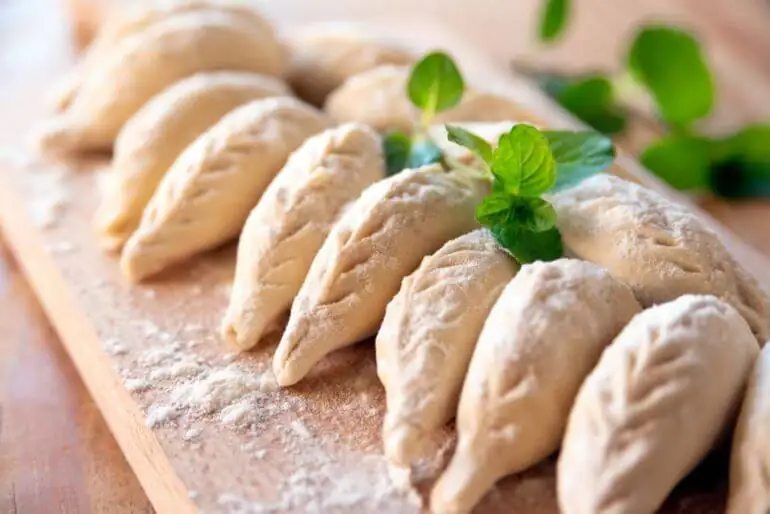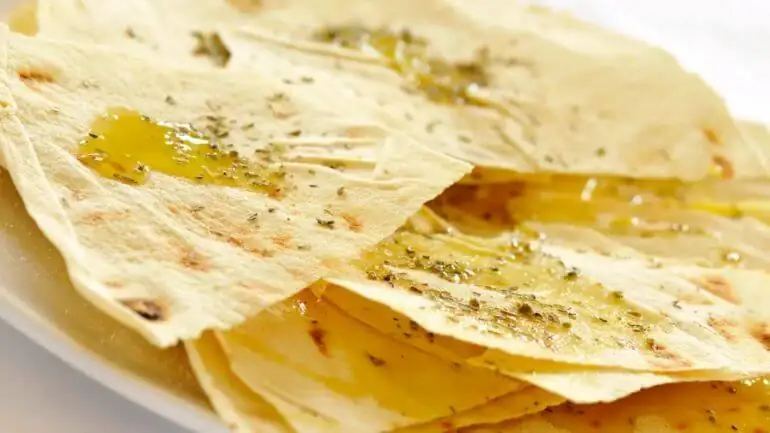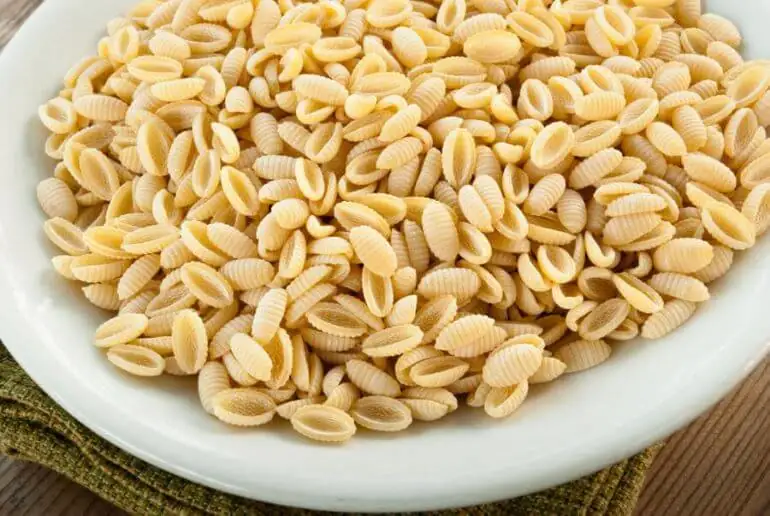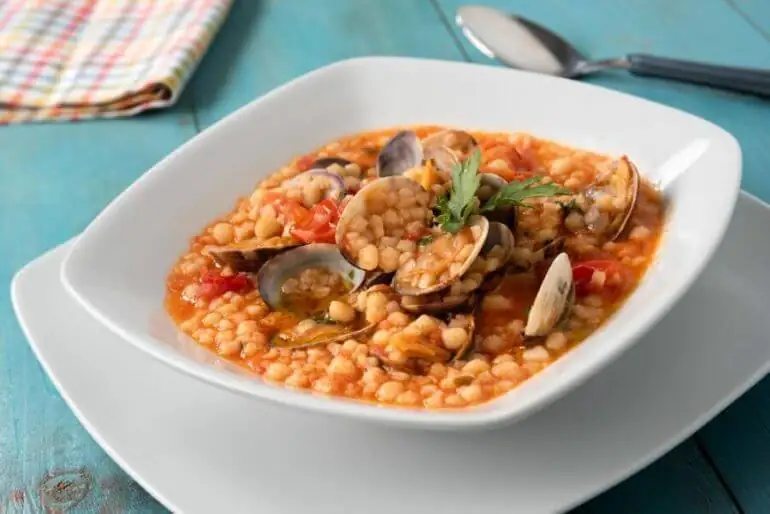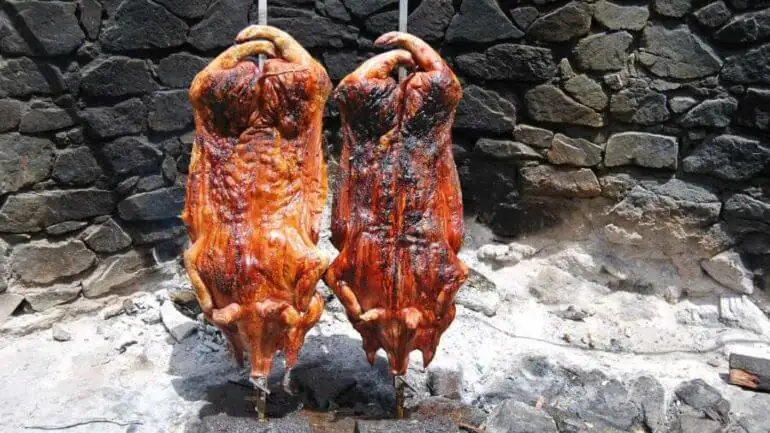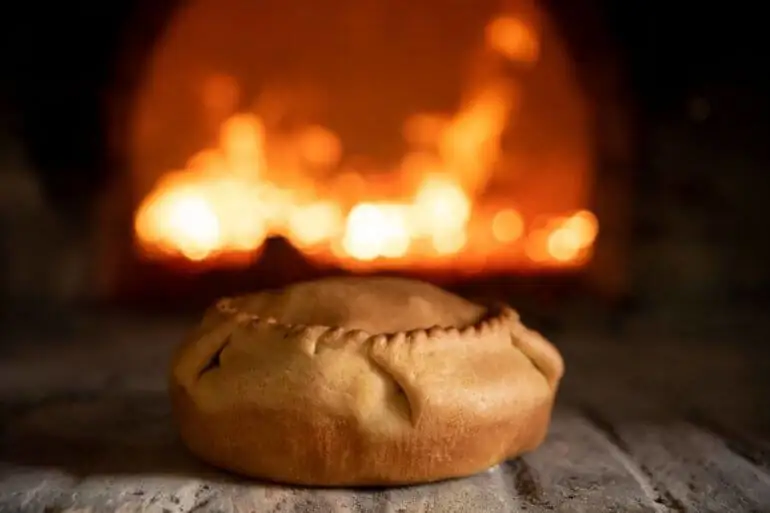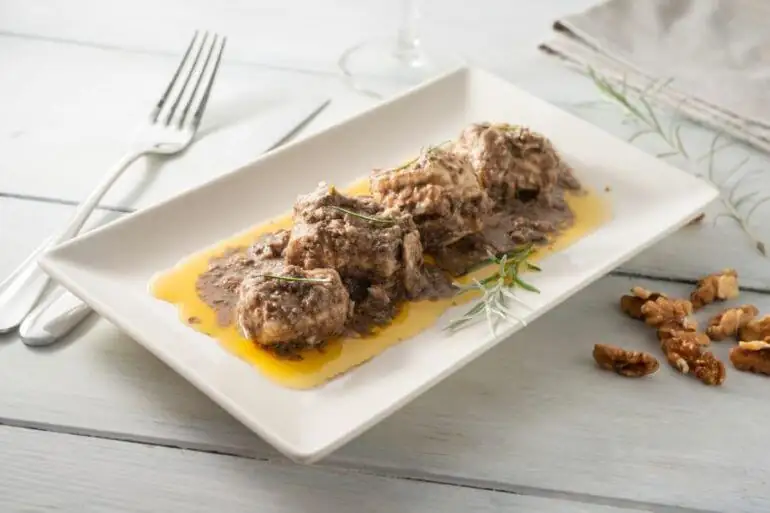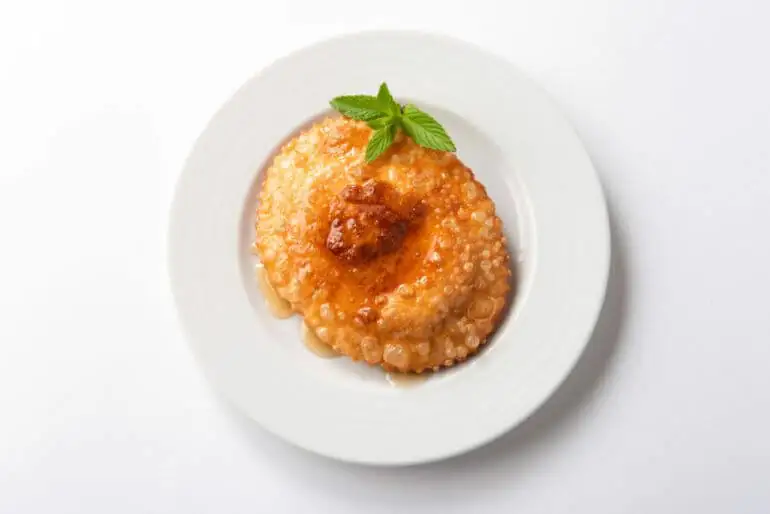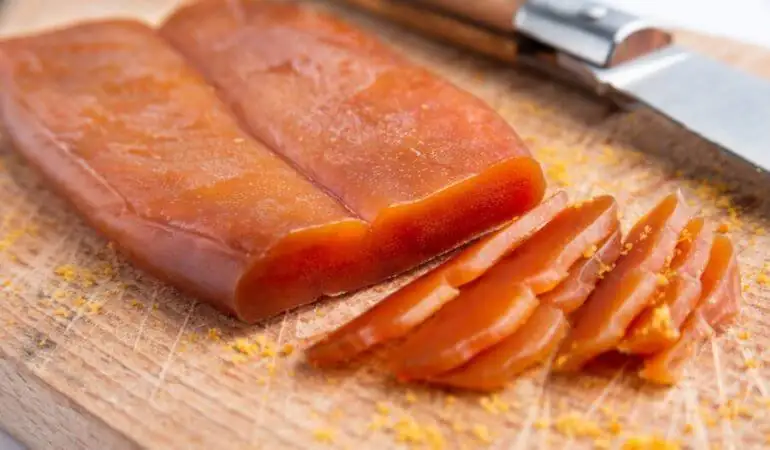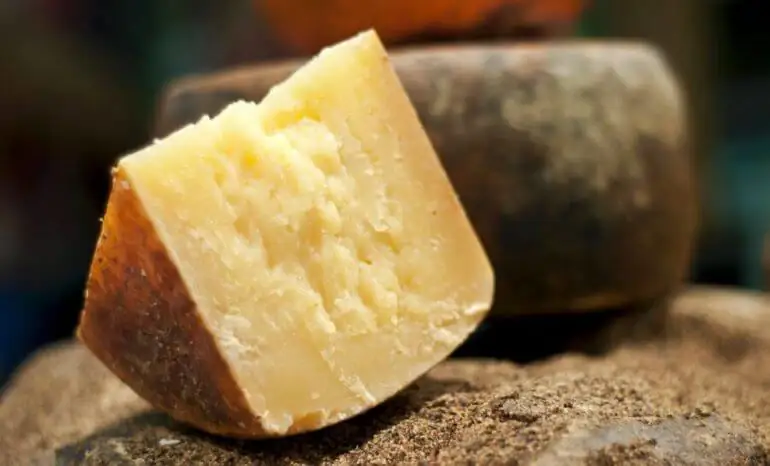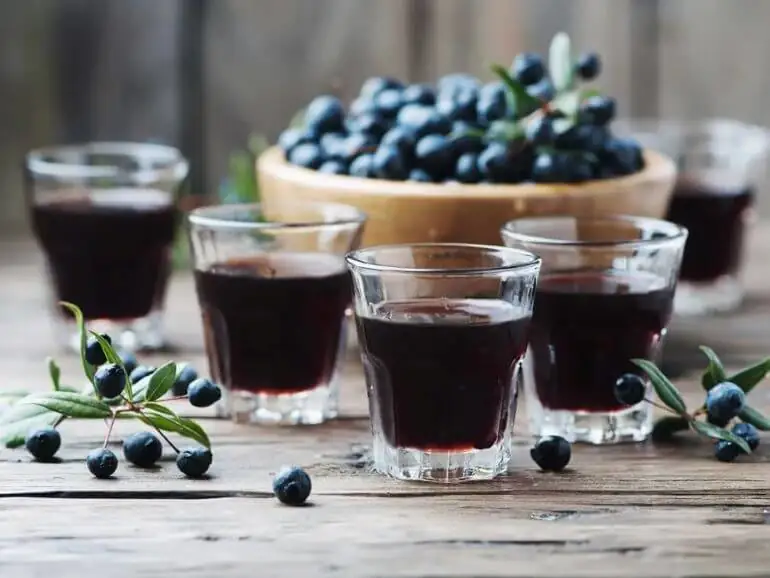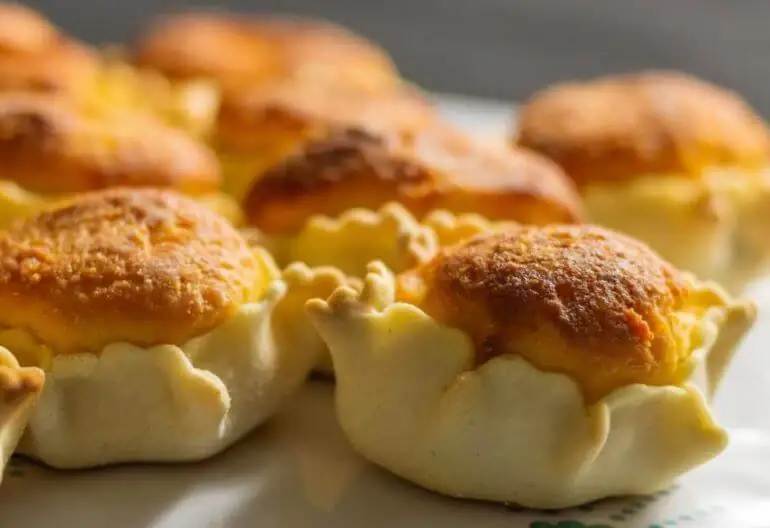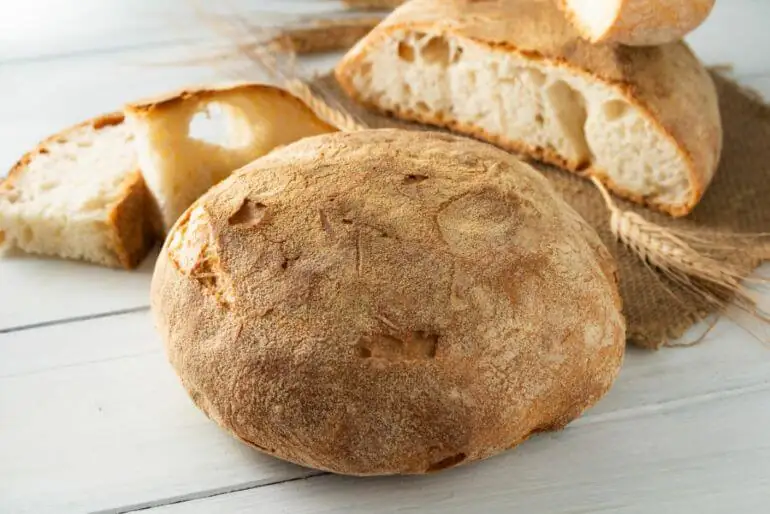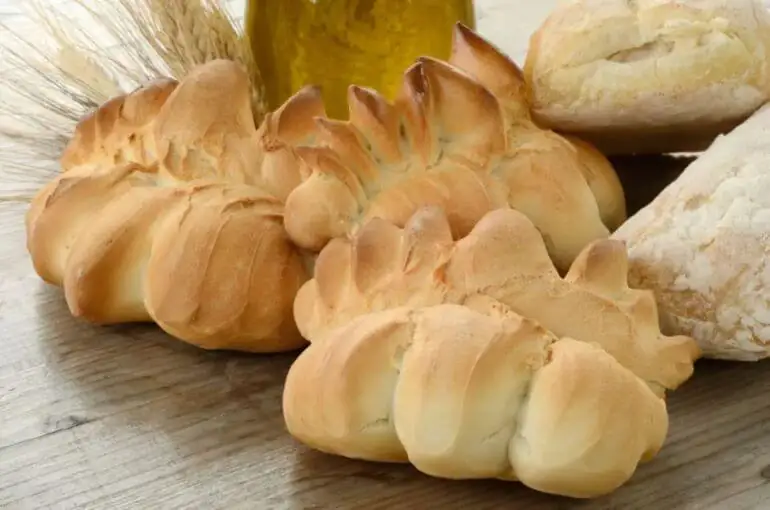Eat like a local
Below you can read an excerpt from an article on the Dissapore website. You can view the full article at the following link: https://www.dissapore.com/cucina/piatti-tipici-sardi-le-specialita-da-provare-in-sardegna/
“A Culinary Journey Through the Traditional Dishes of Sardinia, a Mediterranean Gem and a Paradigm of the Dream Island Close to Home. If you’re getting ready to spend your holidays in this destination that offers crystal-clear waters, rugged coastlines, and lunar landscapes, here you’ll find a small compendium of the specialties to try during your stay”
These stuffed dumplings deserve a special dedicated section. Culurgiones are a bit of an emblem of the saying “different places, different customs”: in Sardinia, every city, town, and small village has its own version. The dough, made from semolina, water, and salt, is filled with mashed potatoes seasoned with pecorino, Parmesan, lard, sautéed onions, and mint. The stuffed dough disks are sealed with a particular and intricate spike-shaped stitch that can only be done by hand and, like the signature of great chefs, changes depending on who makes them or the occasion for which they are prepared. Thus considered not only a tasty first course but also a gift of respect and friendship, they are a true symbol of celebration. Now you know: for your next anniversary, don’t waste time at the jeweler’s—roll up your sleeves and make plenty of culurgiones!
As with many other baked goods, the idea of belonging to a community, sharing, and mutual exchange lies at the heart of the ritual surrounding pane carasau. In Sardinian tradition, its preparation was a collective effort: each family, depending on the number of members, would produce dozens of kilos of pane carasau, and all the relatives were involved. The so-called sas cochitoras, women who made bread as their profession and who were the keepers of songs, stories, and distant memories, were called upon for this task. Technically, pane carasau consists of semola flour, water, salt, and yeast. First, the dough is kneaded, then divided into small pieces about the size of a fist. At this point, the dough is rolled out into thin, round sheets, all of equal size. Next comes the first baking, which causes the sheet to puff up like a balloon, which will then be opened along its circumference. From each loaf, two discs are obtained, which, after cooling, are finally toasted individually. This crisp and delicate “carta da musica” (“music paper”) in Sardinia is paired with almost anything and is the base for many typical dishes. Let’s look at a few.
One of the simplest dishes featuring pane carasau is pane salìtu chin bagna. This is bread seasoned with cheese and sauce, assembled by alternating layers of slightly moistened pane carasau with fresh tomato sauce and cheese (preferably pecorino). You could call it a “Sardinian lasagna.”
Pani frattau
This preparation sees pane carasau soaked and seasoned with genuine, flavorful ingredients. The bread is broken into pieces, moistened with sheep broth, laid out, seasoned, and baked. The typical pani frattau recipe includes meat broth, tomato sauce, a poached egg placed on top of the composition, and pecorino cheese to taste, sprinkled as you prefer.
Zuppa gallurese
In a baking dish, pane carasau is moistened with sheep broth, covered with shredded meat, tomato sauce, and pecorino cheese flakes. This process is repeated until the dish is filled, and then it is covered with broth and baked in the oven. The result is called a soup in name, but not in texture, a sort of casserole that you can easily enjoy on a flat plate..
Malloreddus
A pasta shape with an unmistakable silhouette, malloreddus are typical of the Medio Campidano region, and until not too long ago, their consumption was inseparably tied to special occasions. The shape, which might remind a small shell, actually represents a calf, the malloreddus, a diminutive of malloru, which in dialect means bull. This symbolizes prosperity, a concept dear to the ancient agricultural and pastoral imagination of the people from Campidano, deeply connected to the culture (and cultivation) of wheat. The artisanal production technique of malloreddus involves two ingredients: durum wheat semola and water, a wicker basket, and a pair of skilled, patient hands. The dough is quickly rolled across the rough surface of the basket, giving the gnocchetti their characteristic ridged shape, perfect for capturing sauce. One must try the malloreddus alla campidanese, a traditional recipe with a tomato, sausage, and saffron sauce, typically served with shavings of Sardinian pecorino and a basil leaf.
Fregola con Arselle
Fregola con arselle is one of the most well-known first courses of Sardinian cuisine. The preparation is quite similar to that of couscous: in a large earthenware container, durum wheat semola is mixed by hand, gradually adding salted water to the dough. Once the small granules are well-separated and have reached the desired size, they are ready for the next steps: drying and toasting in the oven. Fregola is boiled in salted water like regular pasta and can be seasoned in countless ways. It can be served plain, with a tomato-based sauce, risotto-style, stewed, and paired with meat, fish, or vegetables. We recommend starting with the sea and a classic like fregola with clams, a typical dish from Cagliari, enjoyed in a light broth flavored with tomatoes, parsley, and chili pepper.
Roast Suckling Pig
The roast suckling pig (porceddu, porcheddu, polcheddu, procceddu, depending on the area) is an iconic specialty here, so much so that it has been included among the Traditional Agri-food Products of the region. The ideal candidate is between thirty and forty-five days old, weighs around seven kilos, and has been exclusively milk-fed, with the optional addition of herbs and grains. The traditional cooking method is vertical spit-roasting over embers of olive or juniper wood. However, no one will be offended if you use a classic horizontal spit, as long as you respect the quality of the meat, cook it slowly (at least 4 hours), and use herbs wisely. Salt should be added halfway through cooking to keep the inside juicy and the skin crispy. It’s also a shame not to take advantage of the abundant aromatic herbs of the Sardinian Mediterranean scrub: flavor the porceddu with myrtle, wild fennel, thyme, pepper, and saffron.
In addition to roast suckling pig, another iconic dish of Sardinian culinary tradition is Roast Lamb. This dish symbolizes conviviality and celebration, often served during Easter celebrations and other special occasions. The preparation of roast lamb is simple but requires attention and care. The lambs are typically seasoned with salt and fresh herbs like rosemary and myrtle, which give the dish an unmistakable aroma. Slow-cooked over charcoal or in a wood-fired oven, the meat becomes tender and flavorful, while the outer crust caramelizes, offering an irresistible crunch.
Eal Panada
The panada is a bit like the pizza of Sardinia: everyone agrees on the base, but when it comes to the filling, things get tricky—everyone has their own recipe, and the most popular one nowadays is, unsurprisingly, lamb. However, the true origin of this dish (and the version we consider unmissable) is the eel panada. A traditional dish from Assemini in the Campidano region, an area rich in lagoons and lakes, it features a savory dough similar to shortcrust pastry. This dough is rolled out and filled with eels, sun-dried tomatoes, garlic, and parsley (with variations that also include stewed potatoes and peas). The ingredients are placed raw into the dough and sealed within the pie using a characteristic (and labor-intensive) braided edge created by “pinching” the dough. The panada is then baked in the oven, resulting in a visually striking, Renaissance-style dish perfect for special occasions.
Burrida
The star of burrida is the gattuccio di mare (small-spotted catshark), a tender Mediterranean shark that is boiled, cut into pieces, and served as an appetizer. The key step is to set aside the fish’s liver from the start, as it is essential for the sauce, which also includes oil, garlic, walnuts, chili pepper, and parsley. The pieces of catshark are layered in a container, the sauce is poured over them, and then the dish is left to rest for at least 24 hours. Like pizza and minestrone, this dish tastes even better the next day.
Sebadas o Seadas
These fried ravioli, made from a dough of semola and lard, are filled with fresh cheese, preferably sheep’s milk cheese, which is not salted but left to sour for a few days. Once the seadas are sealed, they are fried and immediately covered with warm honey, so that it spreads evenly over the surface. They should be eaten right away to enjoy the indulgent combination of sticky, sweet honey on your fingers and the melted cheese slowly oozing out from its golden crust.
Bottarga
Bottarga is dried fish roe, typically from mullet. It has a very strong flavor and is considered a delicacy. It can be enjoyed in various ways. As an appetizer, it can be thinly sliced and served with artichokes, celery, and cherry tomatoes, all dressed with good olive oil. Its most common use is on spaghetti, and it’s also the simplest recipe: all you need is spaghetti, excellent extra virgin olive oil, and grated bottarga.
Pecorino Sardo
The authentic taste of sardinian cheesemaking tradition, pecorino sardo is a semi-cooked cheese that embodies the rich cheesemaking tradition of Sardinia. Aged for at least 4 months, this cheese is loved by those who appreciate strong and authentic flavors. Its smooth rind, an intense yellow, is treated with olive oil to preserve its qualities, while the compact, straw-yellow interior can vary in hardness depending on the aging process. As Pecorino ages, its flavor becomes richer, more complex, and more pronounced, offering a true explosion of taste. Pecorino Sardo is a cheese with a distinctive flavor that pairs perfectly with bold red wines, cured meats, and rustic bread. Grated over pasta and soups, it adds depth and intensity to every dish. In the kitchen, this cheese is a key ingredient in many traditional Sardinian recipes, such as Pane Frattau, or any dish that requires a gratin cheese with a strong flavor. For a truly unique experience, try Pecorino Sardo melted over the grill and enjoyed with traditional pane carasau. The contrast between the crispness of the bread and the soft, melted cheese is irresistible. For those who love sweet and savory contrasts, Pecorino Sardo pairs perfectly with Sardinian honey and jams, a combination of flavors so addictive you’ll want to enjoy it again and again. Discover the authentic taste of Sardinia through this cheese, which represents not only a symbol of its gastronomic tradition but also a true delight for the palate.
Mirto Liqueur: The Essence of Sardinia in a Glass
Mirto liqueur is one of the most authentic symbols of Sardinia, a land rich in intense flavors and ancient traditions. This liqueur is made by infusing myrtle berries, a wild plant that grows abundantly along the coasts and inland areas of the island. The result is a drink with a deep color and an intense taste, capturing the scents of the Mediterranean maquis and the true spirit of Sardinia. The production of mirto follows a traditional, artisanal process passed down through generations. The berries, harvested in winter when they are fully ripe, are steeped in pure alcohol, where they slowly release their unique flavor. After weeks of maceration, the liquid is filtered and mixed with a syrup of water and sugar, creating the perfect balance between sweetness and intensity. There are two main varieties: red mirto, made from the berries, andwhite mirto, made from the leaves and flowers of the plant, which has a more delicate and aromatic flavor. The Authentic Taste of Sardinia, mirto liqueur is more than just a drink: it’s a sensory experience that encapsulates the flavors of Sardinia. Its taste is bold, herbal, and slightly sweet, with notes of ripe fruit, spices, and a slightly bitter aftertaste. Traditionally served cold at the end of a meal as a digestif, it’s also perfect for sipping with friends, perhaps paired with typical Sardinian sweets like seadas or amaretti. Though primarily enjoyed as a digestif, mirto can also be used in cooking to enhance desserts, ice creams, or creams, and even to marinate meats, giving recipes a touch of authentic Sardinian flavor. This liqueur tells a story of deep connection to the land, of tradition, and passion for genuine flavors. Bringing home a bottle of mirto is like taking a piece of Sardinia with you. It’s the perfect gift for those who love discovering new and authentic flavors, or for anyone wanting to relive the island’s scents every time they pour a glass. If you ever visit Sardinia, don’t miss the chance to taste this liqueur straight from local producers, where you can savor every nuance of this unique distillate.
Pardule
Pardule, also known as pardulas, are one of Sardinia’s most beloved desserts, reflecting the island’s rich culinary tradition rooted in its pastoral and agricultural culture. These small delights, made with ricotta or fresh cheese, are especially popular during the Easter season, but they’re so loved that you can find them year-round in many Sardinian bakeries and homes.Pardule are made with just a few simple ingredients, but the quality of these ingredients is what makes all the difference. The base is a thin, crispy dough made from flour, lard, and water, which encloses a soft filling of ricotta or fresh cheese, flavored with saffron, lemon zest, and orange zest. This combination of flavors gives pardule a fresh, delicate, and slightly citrusy taste, with the distinctive touch of saffron making it even more special.Although they are now made year-round, pardule remain an undeniable symbol of Easter in Sardinia. During this time, Sardinian families gather to prepare these little treats at home, following recipes passed down through generations. Their characteristic shape, resembling small “baskets” with raised edges, makes them instantly recognizable and represents a true symbol of tradition. Pardule can be enjoyed on their own, as a dessert at the end of a meal, or paired with a good glass of sweet wine, such as Vermentino di Gallura or Malvasia. They are also perfect for an afternoon snack or a sweet treat during the day. Every bite tells the story of a land rich in traditions, where the simplicity of ingredients meets the artisanal care in preparation.
Civraxiu and Coccoi: Two Treasures of Sardinian Breadmaking
Bread is one of the oldest and most symbolic foods in Sardinia, a land with a millennia-old tradition of producing various types of bread. Civraxiu and Coccoi, two breads that tell the story, culture, and daily life of Sardinian communities. Made with simple ingredients like flour, water, yeast, and salt, these two products represent an art passed down through generations.
Civraxiu
Civraxiu is a rustic bread, particularly popular in the Campidano region, and is one of the emblems of traditional Sardinian cuisine. It is characterized by a thick, crunchy crust and a soft, spongy crumb. Civraxiu is made with durum wheat semola and sourdough, giving it an authentic, slightly tangy flavor. Its shape is usually round, and the bread can be quite large—so much so that, in the past, a single loaf could last a family for up to a week. Perfect for pairing with Sardinian cured meats and cheeses, such as pecorino, or for accompanying meat dishes and soups, civraxiu is valued for its ability to stay fresh and flavorful for days. It’s the bread that graces Sardinian family tables, symbolizing togetherness and abundance.
Coccoi
Coccoi is a much more elaborately shaped, festive and decorative bread. Made from durum wheat flour, coccoi is typical of festive occasions, such as weddings, baptisms, or Easter, when it is shaped into particularly artistic forms, ranging from simple braids to intricate animal shapes or religious symbols. Its preparation requires great skill: after the dough is kneaded and shaped, incisions are made with scissors or knives, which, once baked, give the bread a sculptural appearance. Despite its beauty, coccoi is not just decorative; its thin, crunchy crust and compact, dense crumb make it perfect to enjoy with olive oil, fresh cheeses, or even paired with traditional Sardinian sweets like honey.



